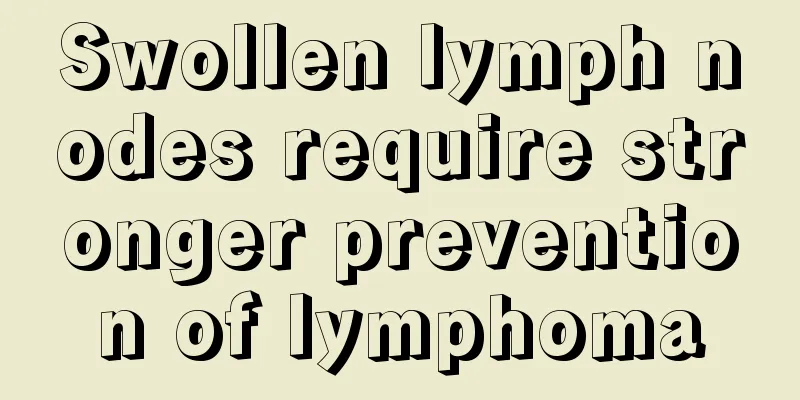Adverse reactions to plasma transfusion

|
In life, when you suffer from a disease, you must check and treat it in time. Some diseases seem insignificant on the surface, but when the disease is delayed, there will be more serious consequences, especially some acute diseases, which will require plasma transfusion to the patient. There are many differences between plasma and blood. Some patients will have some adverse reactions after plasma transfusion, so pay attention to observe the symptoms that appear. 1. Hemolytic adverse reactions During or after a blood transfusion, the transfused red blood cells or the recipient's own red blood cells are excessively destroyed, which is called transfusion-related hemolysis. Transfusion-related hemolysis can be divided into acute and chronic types. (I) Acute transfusion-related hemolysis Refers to hemolysis that occurs during or within minutes to hours after a blood transfusion. Symptoms include high fever, chills, palpitations, shortness of breath, back pain, hemoglobinuria and even urinary retention, acute renal failure and DIC. Laboratory tests showed intravascular hemolysis. The causes of this type of hemolysis include: ① incompatibility of blood types between the donor and recipient (ABO blood type or its subtype incompatibility, Rh blood type incompatibility); ② improper storage, transportation or handling of blood; ③ the recipient suffers from a hemolytic disease, etc. This type of hemolysis should be treated promptly and thoroughly, such as: immediately stopping blood transfusion, applying large doses of glucocorticoids, alkalizing urine, diuresis, ensuring blood volume and water-electrolyte balance, correcting hypotension, preventing and treating renal failure and DIC, and performing dialysis, plasma exchange or exchange transfusion therapy when necessary. (II) Chronic transfusion-related hemolysis Also known as delayed transfusion-related hemolysis, it is often manifested by jaundice and increased reticulocytes several days after transfusion. It is more common in rare blood type incompatibilities, sensitization to produce alloantibodies after the first blood transfusion, and alloimmune hemolysis after a second transfusion of the donor's red blood cells. Treatment is essentially the same as for acute transfusion-related hemolysis. 2. Non-hemolytic adverse reactions (I) Fever Non-hemolytic fever is the most common transfusion reaction, with an incidence of more than 40%. The main symptoms are fever and chills during blood transfusion; temporarily terminating the transfusion and treating with antipyretic analgesics or glucocorticoids are effective. The causes of this adverse reaction are: ① Pyrogen in blood or blood products; ② The recipient produces antibodies to the same type of white blood cells or (and) platelets after receiving blood multiple times. A common method to prevent this adverse reaction is to filter and remove pyrogens, white blood cells and their fragments from the blood before transfusion. (ii) Allergic reaction During or after blood transfusion, the recipient may experience sore throat, angioedema, and in severe cases, systemic rash, laryngeal edema, bronchospasm, and a drop in blood pressure. The causes of this adverse reaction include: ① The transfused blood or blood products contain allergens; ② The recipient has a highly allergic constitution or has become sensitized due to multiple blood transfusions. When dealing with this adverse reaction, one must first slow down or even stop blood transfusion, and secondly, provide anti-allergic treatment. Sometimes antispasmodics (when bronchospasm occurs) and anti-shock treatment are also needed. (III) Spread of diseases The infectious diseases transmitted through blood transfusion mainly include various types of viral hepatitis, acquired immunodeficiency syndrome (AIDS), cytomegalovirus infection, syphilis infection, protozoan infection, and various possible pathogenic microorganism infections caused by contaminated blood. The prevention of this type of adverse reaction mainly involves: controlling the qualifications of blood donors and the sterilization of blood collection, storage, transportation, quality inspection, and infusion. (IV) Others An excessive blood transfusion at one time can cause acute heart failure, left heart failure, hemorrhage in the lungs, etc. Multiple blood or red blood cell transfusions can cause iron overload in the recipient. Repeated allogeneic blood transfusions, |
<<: How to remove oil from face
>>: The role of plasma transfusion
Recommend
How to remove double eyelid glue
Double eyelid glue is a common cosmetic method. I...
Are there any differences in symptoms between anaplastic thyroid cancer and papillary thyroid cancer?
There are significant differences in the symptoms...
It is not groundless that drinking tea regularly can prevent and treat stomach cancer
Some friends who love drinking tea will be very f...
Let's analyze the causes of kidney cancer in detail
The occurrence of kidney cancer is also very seri...
What are the benefits of sticking ginger slices on the navel
Applying ginger slices to the navel has a certain...
What are the taboos when moving to a new home
There are many times in life when you need to mov...
What can spare ribs be stewed with
Pork rib soup is not only delicious but also can ...
Lung cancer in the late stage, the eyes are dull and the spirit is very weak, what's going on?
It is recommended that you use traditional Chines...
What are the causes of breast cancer? Pay more attention to the 6 common causes of breast cancer
How is breast cancer caused? How to prevent breas...
What are the methods for checking prostate cancer?
Prostate cancer is a malignant tumor. If the pati...
What are the characteristics of diarrhea caused by intestinal cancer
Diarrhea generally refers to diarrhea. The charac...
How to grow mung bean sprouts?
In recent years, food safety issues have become m...
What kind of melon is northern melon?
Beizu, which is something we can easily get in ou...
Where do the scalene muscles originate and insert?
The scalene muscles are actually a muscle group, ...
What is non-small cell lung cancer associated antigen? An examination of an indicator of lung cancer
If the values of non-small cell lung cancer rel...









